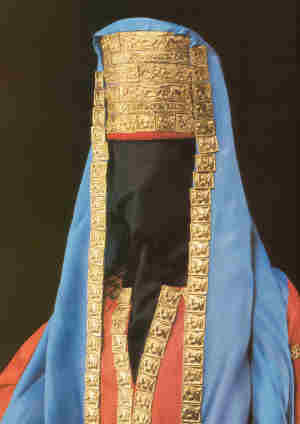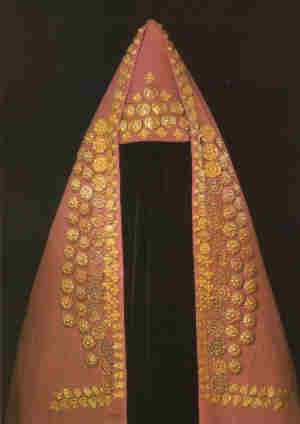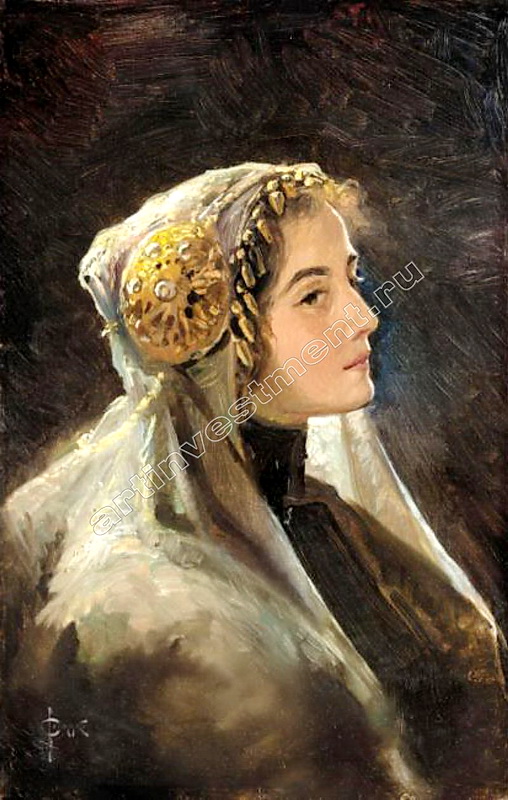Post by aspenivan on Oct 8, 2014 4:19:23 GMT
Population:
Roughly 18,000,000 total, not counting vassal kingdoms. Almost all residents counted in the Imperial Census are human, but many nonhuman traders and vagrants wander the land, while many part-humans are counted among the Survaekom “Nations” due to their tight integration into existing communities. Most notably, a shifting proportion from 1-5% of the population is Sylph, though many are brigands and bandits who go unregistered in the census.
By Nation (ethnicity), as listed in the Yvorian Census...
5,000,000 Khaitis – The dominant ethnic group of Survaek, the Khaitis were once a nomadic pastoralist people known for their horsemanship and their mystic worship of the sun and wind. However, after the reign of the Prophet-Emperor Raegar dramatically overturned their religion for Aedak monotheism and brought them to conquer their neighbors, the tribe gradually transitioned from its old nomadic ways to a settled life. The nobility settled mostly by choice as they took on roles as permanent regional vassals, adopting Court traditions heavily inspired by the Kingdom of Byrnia. Some subjects were settled with their lieges by force, but many simply immigrated and integrated into the Southern Tribes. By the time the First Empire had collapsed over a millenium ago, the Khaitis were a feudal people. More recently, the old nobility mostly disappeared in a string of massacres and coups, but the Khaitis remain a settled people bound by the values of strict duty and hierarchy set by orthodox Aedak and the Vaekirate.
In appearance, they are generally marked by skin ranging from dark tan to copper or light brown and angular facial features. Though typical Khaitis clothing varies, one common element is the head-dress, which all Imperial soldiers and functionaries must wear. Furthermore, Khaitis art is known for its emphasis on plant and flower imagery, and most higher Imperial officers and bureaucrats embroider their robes accordingly.
5,900,000 Byrnians – Byrnians were the first settled people of the region, and Byrnis was the region's first city. They have been renowned as seafarers, merchants, and masters of many languages since ancient days, though these skills are concentrated in the urban elite while the majority of the population are farmers speaking only their local dialects (as with almost any other settled people). A twice-conquered people, the Byrnians have been largely committed to Aedak religion for the last millenium, but with a faith informed by their more democratic and egalitarian traditions. Their culture has heavily influenced norms on the rest of the continent, most recently in the growing prevalence of women as Aedakom priests, in elements of the Yvorian Contract, and in prior ad hoc reforms in Survaek. However, the Kingdom of Byrnia's shift towards a Noble Republic of Byrnis Great Houses was considered a step too far that, among other minor heresies, justified the second Khaitis invasion.
Common "Byrnian" physical qualities are skin ranging from light to very dark brown, relatively round facial features, and relatively short stature. However, because historically people of the other nations have frequently assimilated into Byrnian society or adopted Byrnian traditions, visual distinctions are very ambiguous. Their clothing and architecture, on the other hand, do bear distinct stylistic markers: recurring stars, triangles, and crosses (and more generally speaking, geometric patterns).
*Note on Byrnian naming conventions: Byrnian family names are their “first names,” while their individual names are generally archaic Byrnian adjectives, which all end in “u.”
2,500,000 Southern Tribespeople – Encompassing a number of closely-related ethnic groups descended from the same stock as the Khaitis, the ways of the Southern Tribes resemble the Khaitis of ancient times. They are mostly nomadic pastoralists whose syncretic, mystic version of Aedak treats the sun and wind as proxies for Aed. It was not primarily for this reason, however, but rather for two others that Waentaer justified his conquest of their lands: their practice of polygamy and their persistent election of Chief Priests for every one of their many tribes, of whom the Vaekir consistently rejected all but the Chief Priest of Arkhaer. Despite their significant differences with the Khaitis, many Southern Tribal clans hold their ties to the Khaitis very dear, which in part explains the many mass defections that helped Waentaer conquer the Southern Steppes.
As for physical traits, most of the Southern Tribes resemble the Khaitis, but some of the Southernmost are known for their unusually pale skin and red hair. Their art is overwhelmingly focused on the motifs of sun and wind, but this comes across mostly through handicrafts other than clothing. Even elite Southern Tribespeople dress rather simply in comparison to the elites of other Survaekom nations.
3,600,000 Raethonite – Like the Byrnians, the Raethonites are a twice-conquered people with a long tradition as a powerful kingdom. However, they never possessed the cultural sway of their historical enemies, the Byrnians, over the rest of the continent. And unlike Byrnia, the conversion of Raethon was a slow, grinding, and often violent process that never totally succeeded. As opposed to their more pluralistic philosophical rivals, the Raethonites had a strong, institutionalized religion of their own when Raegar attacked: Vayadu. They worshipped a great pantheon whose chief gods were the married couple Ris (Sun) and Mag (Wind), quasi-symbolic parents of the demi-god King and his dynasty. Naturally, Raegar had this dynasty wiped out, but the religion remains implanted in Raethon even to this day, not only through syncretism but through a persistent Vayadu minority. During the short-lived Duchy of Raethon that lasted from fifty to thirty-five years ago, much of this minority was massacred or formally enslaved.
Running more North-South than East-West, the common physical characteristics of Raethonites are simply too diverse to generalize. And as a patchwork of groups originally united by Vayadu, their art continues to have polytheistic undertones, though mixed with clear Aedakom symbols to avoid accusations of heresy.
300,000 Non-Survaekom – This single category encompasses all Aedakom (believers in the Survaekom state religion) who do not hail from one of the three established Nations of Survaek. The majority of these are Sylph and Messarom, many having been drawn to Survaek by religious sites, the academies, growing industries, or lucrative trade. The category also includes communities of Northerners who converted to Aedak and moved to Survaek before the Great Conquest to escape persecution in their homelands.
700,000 Heathens – Whether Khaitis, Byrnian, Southern Tribespeople, or foreigners, these residents of the Grand Empire are classified under one heading to designate their unbelief. Some have rejected Aedak consciously, and many are criminals or vagrants deemed unfaithful for their behavior, but by far the largest contingent are prisoners of war from the Conquest of the North. Almost all of these are formally enslaved, working in quarries, mines, galley rowing decks, and other hard labor with uncovered torsos and branded hands and foreheads to mark their shame.
By settlement, as listed in the Yvorian Census
~1,100,000 in cities
– 270,000 in Foedinei
– 400,000 in Byrnis
– 20,000-100,000 in Arkhaer (number shifts)
– 110,000 in Reyirik
– 220,000 Kafu
1,800,000 in towns and caravanserais
10,500,000 in Self-Ruling Villages (livestock, fishing, staple crops)
3,600,000 in Crown Villages (mining and cash crops)
Roughly 18,000,000 total, not counting vassal kingdoms. Almost all residents counted in the Imperial Census are human, but many nonhuman traders and vagrants wander the land, while many part-humans are counted among the Survaekom “Nations” due to their tight integration into existing communities. Most notably, a shifting proportion from 1-5% of the population is Sylph, though many are brigands and bandits who go unregistered in the census.
By Nation (ethnicity), as listed in the Yvorian Census...
5,000,000 Khaitis – The dominant ethnic group of Survaek, the Khaitis were once a nomadic pastoralist people known for their horsemanship and their mystic worship of the sun and wind. However, after the reign of the Prophet-Emperor Raegar dramatically overturned their religion for Aedak monotheism and brought them to conquer their neighbors, the tribe gradually transitioned from its old nomadic ways to a settled life. The nobility settled mostly by choice as they took on roles as permanent regional vassals, adopting Court traditions heavily inspired by the Kingdom of Byrnia. Some subjects were settled with their lieges by force, but many simply immigrated and integrated into the Southern Tribes. By the time the First Empire had collapsed over a millenium ago, the Khaitis were a feudal people. More recently, the old nobility mostly disappeared in a string of massacres and coups, but the Khaitis remain a settled people bound by the values of strict duty and hierarchy set by orthodox Aedak and the Vaekirate.
In appearance, they are generally marked by skin ranging from dark tan to copper or light brown and angular facial features. Though typical Khaitis clothing varies, one common element is the head-dress, which all Imperial soldiers and functionaries must wear. Furthermore, Khaitis art is known for its emphasis on plant and flower imagery, and most higher Imperial officers and bureaucrats embroider their robes accordingly.
5,900,000 Byrnians – Byrnians were the first settled people of the region, and Byrnis was the region's first city. They have been renowned as seafarers, merchants, and masters of many languages since ancient days, though these skills are concentrated in the urban elite while the majority of the population are farmers speaking only their local dialects (as with almost any other settled people). A twice-conquered people, the Byrnians have been largely committed to Aedak religion for the last millenium, but with a faith informed by their more democratic and egalitarian traditions. Their culture has heavily influenced norms on the rest of the continent, most recently in the growing prevalence of women as Aedakom priests, in elements of the Yvorian Contract, and in prior ad hoc reforms in Survaek. However, the Kingdom of Byrnia's shift towards a Noble Republic of Byrnis Great Houses was considered a step too far that, among other minor heresies, justified the second Khaitis invasion.
Common "Byrnian" physical qualities are skin ranging from light to very dark brown, relatively round facial features, and relatively short stature. However, because historically people of the other nations have frequently assimilated into Byrnian society or adopted Byrnian traditions, visual distinctions are very ambiguous. Their clothing and architecture, on the other hand, do bear distinct stylistic markers: recurring stars, triangles, and crosses (and more generally speaking, geometric patterns).
*Note on Byrnian naming conventions: Byrnian family names are their “first names,” while their individual names are generally archaic Byrnian adjectives, which all end in “u.”
2,500,000 Southern Tribespeople – Encompassing a number of closely-related ethnic groups descended from the same stock as the Khaitis, the ways of the Southern Tribes resemble the Khaitis of ancient times. They are mostly nomadic pastoralists whose syncretic, mystic version of Aedak treats the sun and wind as proxies for Aed. It was not primarily for this reason, however, but rather for two others that Waentaer justified his conquest of their lands: their practice of polygamy and their persistent election of Chief Priests for every one of their many tribes, of whom the Vaekir consistently rejected all but the Chief Priest of Arkhaer. Despite their significant differences with the Khaitis, many Southern Tribal clans hold their ties to the Khaitis very dear, which in part explains the many mass defections that helped Waentaer conquer the Southern Steppes.
As for physical traits, most of the Southern Tribes resemble the Khaitis, but some of the Southernmost are known for their unusually pale skin and red hair. Their art is overwhelmingly focused on the motifs of sun and wind, but this comes across mostly through handicrafts other than clothing. Even elite Southern Tribespeople dress rather simply in comparison to the elites of other Survaekom nations.
3,600,000 Raethonite – Like the Byrnians, the Raethonites are a twice-conquered people with a long tradition as a powerful kingdom. However, they never possessed the cultural sway of their historical enemies, the Byrnians, over the rest of the continent. And unlike Byrnia, the conversion of Raethon was a slow, grinding, and often violent process that never totally succeeded. As opposed to their more pluralistic philosophical rivals, the Raethonites had a strong, institutionalized religion of their own when Raegar attacked: Vayadu. They worshipped a great pantheon whose chief gods were the married couple Ris (Sun) and Mag (Wind), quasi-symbolic parents of the demi-god King and his dynasty. Naturally, Raegar had this dynasty wiped out, but the religion remains implanted in Raethon even to this day, not only through syncretism but through a persistent Vayadu minority. During the short-lived Duchy of Raethon that lasted from fifty to thirty-five years ago, much of this minority was massacred or formally enslaved.
Running more North-South than East-West, the common physical characteristics of Raethonites are simply too diverse to generalize. And as a patchwork of groups originally united by Vayadu, their art continues to have polytheistic undertones, though mixed with clear Aedakom symbols to avoid accusations of heresy.
300,000 Non-Survaekom – This single category encompasses all Aedakom (believers in the Survaekom state religion) who do not hail from one of the three established Nations of Survaek. The majority of these are Sylph and Messarom, many having been drawn to Survaek by religious sites, the academies, growing industries, or lucrative trade. The category also includes communities of Northerners who converted to Aedak and moved to Survaek before the Great Conquest to escape persecution in their homelands.
700,000 Heathens – Whether Khaitis, Byrnian, Southern Tribespeople, or foreigners, these residents of the Grand Empire are classified under one heading to designate their unbelief. Some have rejected Aedak consciously, and many are criminals or vagrants deemed unfaithful for their behavior, but by far the largest contingent are prisoners of war from the Conquest of the North. Almost all of these are formally enslaved, working in quarries, mines, galley rowing decks, and other hard labor with uncovered torsos and branded hands and foreheads to mark their shame.
By settlement, as listed in the Yvorian Census
~1,100,000 in cities
– 270,000 in Foedinei
– 400,000 in Byrnis
– 20,000-100,000 in Arkhaer (number shifts)
– 110,000 in Reyirik
– 220,000 Kafu
1,800,000 in towns and caravanserais
10,500,000 in Self-Ruling Villages (livestock, fishing, staple crops)
3,600,000 in Crown Villages (mining and cash crops)









